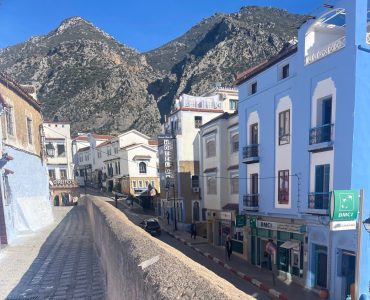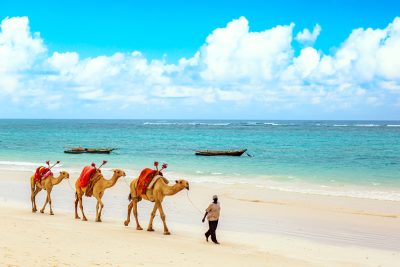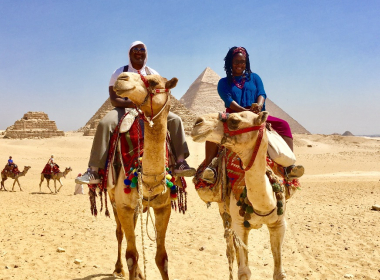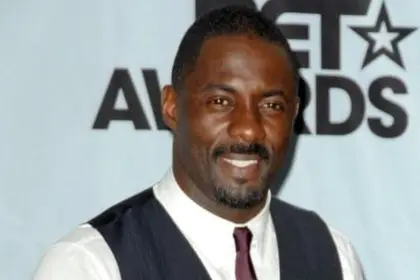I have been very fortunate to have visited Egypt on four occasions but each time I travel to this land of historical antiquities, I remain overwhelmed by the wondrous monuments and history of this North African country. The monuments in Egypt have been consistently described as one of the great “Wonders of the World” as lasting testaments of time going back 10,000-15,000 years ago. From the pyramids of Giza, to historic Cairo, the north flowing Nile River, wonderful bazaars, mosques, temples and historical splendor in this country of 84 million people, you remain in awe of this land. Egypt is a transcontinental country being one of the most populous in all of Africa, the Middle East and the 15thmost populated in the world. About half of Egypt’s residents live in urban areas, with most spread across the densely populated centers of greater Cairo, Alexandria and other major cities in the Nile Delta. Depending on the political climate in Egypt at time of travel, choose a time of great stability to travel there.
The economy of Egypt is one the most diversified in Africa and the Middle East with the sectors such as tourism, agriculture, industry and service at almost equal levels. Egypt is also considered to be a regional and middle power with significant cultural, political and military influence in North Africa, the Middle East and the Muslim world. This Nile Valley civilization begins with the great Nile River itself which is believed to be the longest river in the world at 4,145 miles. As you arrive in Cairo, the obvious realization that you are in a military country is evident as you deplane with armed soldiers near each plane that lands. As you are being taken to your hotel the constant sound of horns resonates in your eardrum. One finds a dramatic contrast in the city beacuse there will be modern hotel with luxury cars in front but a ways down the street you will see an old concrete hut with a person riding a donkey driven cart filled with hay.

Cairo is a contrast of eras in this modern time, depending where you are in the city, you can appear to be in another century. Cairo is the largest city on the African continent, nicknamed “The City of a Thousand Minarets,” where one can visit Giza to see the three Great Pyramids and the Sphinx of King Khafra (4th dynasty), the Mosque of Mohammed Ali where Malcolm X had his picture taken while praying and touring in 1964, the famous market bazaars in Cairo where centuries earlier Mali King Mansa Musa brought a caravan of 10,000 and actually flooded the gold market in Cairo in route to Mecca for Hajj or Pilgrimage and the wonderful Museum of Cairo where many artifacts are on display including the bust of Imhotep, who was the worlds earliest architect, engineer and physician in the 27th century B.C.
As one leaves Cairo to travel further South to see Luxor (Thebes) called, “The City of a Hundred Gates”, a two hour flight of Cairo, where one will be amazed to see the temples and the Egyptian center of power. The Temples of Karnak, the Valley of the Kings where tombs of Rames, Tutankhamen, Queen Hatshepsut, Queen Nefertiti and others can be seen there as well. Also, going even further South, one can visit the grand Temple of Abu Simbel with the four sitting Kings outside the temple. Though Egypt has an ethnically diverse population now, according to scholars like Historian Chancellor Williams, the Black African roots to what is known as Egypt is clear. By Williams’ account, there was no “Egypt” before the Black king from whose name it was indirectly derived. Before that the country was called Chem (Khem) or Chemi (Khemi) — another name indicating its black inhabitants because they referred to their land as Kemet which means the “Black Land” or Kemmiu, which translates as “the blacks.” Chemistry is believed to be the earliest science of the Chemi (Khemi or Kemite) people of Kemet — a black science. Many white scholars try to suggest it referred to the black soil of Egypt, not the people but personally I have traveled all over Egypt or Kemet and did not see the black soil in question.
When considering that Nile Valley civilization, which includes the Sudan and Ethiopia, the contribution to the civilization around the world, including Europe, Greece, Spain and other lands, its contribution is incredible. The parent of what would later be called Egyptian Civilization came from the South (Upper Egypt) where there are more pyramids than in the North (Lower Egypt) so in essence, it’s culture began in the south where you have Sudan, Nubia and Upper Egypt spreading the culture up the north-running Nile River. The land of Egypt or Kemet continues to amaze the world as one of the great wonders of the world in this land of antiquities.
Malik Ismail is an international traveler, historian and activist. He’s explored many cultures in Africa including Ghana, South Africa and Egypt. He’s traveled to Cuba and South America. Recently he visited Rio de Janeiro and Salvador Bahia, Brazil including the favelas of Rocinha and Cidade de Deus (City of God) in Rio. A former Panther Minister of Information (NPVM) whose writings have been featured in the L.A. Watt’s Times, It’s About Time BPP Newsletter, Rolling Out Magazine and The Black Panther Intercommunal News Service. Email: [email protected]

















